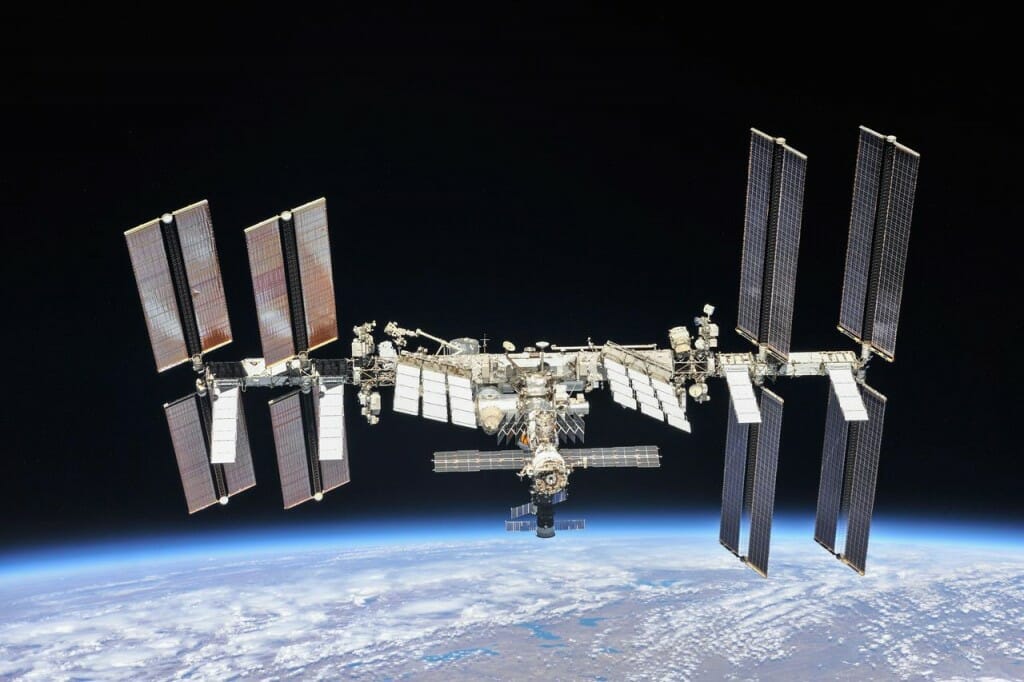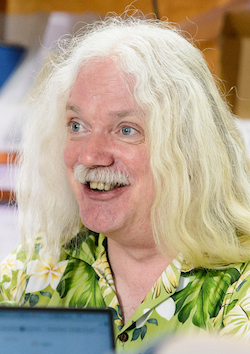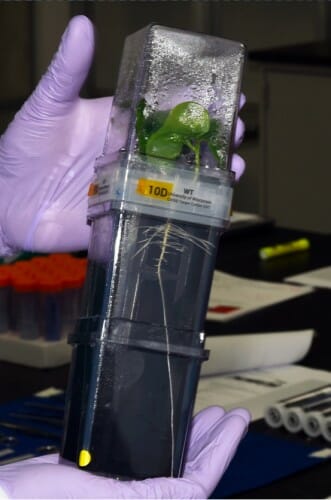Madison Wisconsin, USA
June 1, 2021
 The International Space Station photographed from a Soyuz spacecraft after undocking. NASA
The International Space Station photographed from a Soyuz spacecraft after undocking. NASA
Follow along live at 12:29 p.m. CDT on Thursday, June 3, as University of Wisconsin–Madison botanist Simon Gilroy launches cotton seeds to the International Space Station for experiments designed to improve cotton plants grown on Earth.

Simon Gilroy
Gilroy’s lab will compare cotton grown in space and on Earth to try to understand how the important crop’s root system grows under the unique stresses of zero gravity. The research, funded by Target, is designed to help scientists understand how to more efficiently grow cotton, which requires enormous quantities of water.
This is the first time that cotton will be grown in space. By learning how to grow various crops in zero gravity, scientists can prepare to support longer-term space missions with fresh foods grown in flight or on other planets.o
The live broadcast of the launch on a SpaceX Dragon capsule will be hosted by NASA. Register ahead of time for the full presentation, or watch live on NASA’s YouTube channel. Coverage will begin at noon Central time. In the event of a weather delay, the launch will be rescheduled for June 4.
“We want to understand how gravity influences the development of the root system of cotton,” says Gilroy, an old hand at spacefaring experiments. “Cotton uses huge amounts of water and huge amounts of nutrients. And that’s basically a root system thing. Maybe there are elements related to gravity sensing that we could tweak on Earth to redesign the root system to make it more efficient.”
Ahead of the launch, the research team will prepare cotton seeds on specialized petri dishes at the Kennedy Space Center in Cape Canaveral, Florida. The seeds will be loaded into the Dragon spacecraft and sent to the space station, where astronauts will install them into growth chambers.

A cotton seedling prepared for flight. - Photo courtesy of Simon Gilroy
The seeds will germinate and grow for six days. While the seedlings are growing, astronauts will photograph their roots to capture information about their size, shape and direction of growth. Once the experiment ends, astronauts will freeze the seedlings and prepare them for delivery back to Earth. On the ground in Florida, the Gilroy lab will perform an identical experiment.
Back in Madison, the researchers will be able to compare the patterns of root growth and the expression of different root-related genes between space- and land-grown plants to suss out how zero gravity affected the seedlings.
The experiment will include two kinds of cotton.
“We’re flying regular cotton, but we’re also flying cotton that is genetically engineered to produce a protein that, on Earth, makes cotton more resilient to a big spectrum of stresses. That protein on Earth is switched on under low-oxygen environments. Our prediction is that the overexpression line will grow better in space,” says Gilroy.
The Gilroy lab has previously sent four experiments to the space station. Like the cotton experiments, past research has focused on how the common model plant Arabidopsis responds to the unique low-oxygen stresses of zero gravity.
Related story from NASA